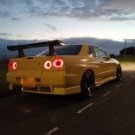I Was Going To Switch To E85...
Announcements
-
Similar Content
-
Latest Posts
-
Whilst the brewery had good beer, I didn't rate the pork knuckle, the meat was good, but, there was no crackling, the skin was just thick and chewy Will return at some stage for the beer, but, I will wash the beer down with chips Plus, no sauerkraut, in what world do people serve pork knuckle without sauerkraut, they did serve apple slaw with it, which was nice, but.......#sauerkraut the world
-
By Murray_Calavera · Posted
Wow yeah ok. Given how specific you are about your car, I'm very surprised you are happy to do that. As a bare minimum, without having a wideband gauge in the car or running it up on the dyno to check mixtures, there is no way I'd do that to my car. You beat me to it, was going to say just this. -
Yeah - that's not true. Larger turbos flow more at the same boost. By definition. I've always found it funny when the claim of same flow same power because same boost is made. The turbine is larger, therefore will put up a lower restriction to flow at any given flow, cf the stock one. Hence, you need less boost to make the same flow through the whole system. Hence, when you have the same boost as before, you must have more flow. -5s are a pretty decent bit bigger than stock.
-
By joshuaho96 · Posted
That's basically how I've been driving my R33 for a while now. GTIII-SS running wastegate boost. It makes no more power than stock because the turbos aren't flowing any more air than stock. Eventually though I need to fix this so it can actually drive as it should. -
By Dose Pipe Sutututu · Posted
If this was my own car, I would pull about 5 degrees off the CAS, run a wideband, and if that seems ok, send it.
-








Recommended Posts
Create an account or sign in to comment
You need to be a member in order to leave a comment
Create an account
Sign up for a new account in our community. It's easy!
Register a new accountSign in
Already have an account? Sign in here.
Sign In Now